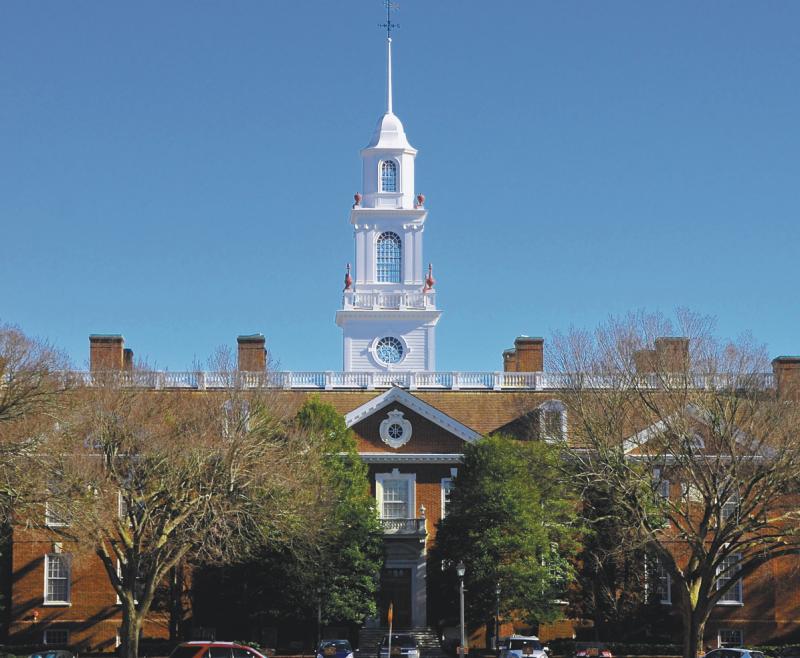It came and went with little mention, but when state legislators approved a Fiscal Year 2017 budget of $4.08 billion June 30, it marked the first time in Delaware history that the state’s operating budget for a single year would be more than $4 billion.
Speaker of the House Rep. Pete Schwartzkopf, D-Rehoboth Beach, said he hadn’t really thought about passing the benchmark, but, he said, he wasn’t surprised.
With a $3.7 billion budget in FY14, a $3.8 billion budget in FY15 and a $3.9 billion budget in FY16, broaching the $4 billion mark was inevitable.
There are more and more people moving and retiring to Delaware, which means there’s going to be an increase to the amount of money spent on services, said Schwartzkopf.
What could be labeled as surprising is how little resistance this year’s budget faced as it made its way through the General Assembly. Last year, the budget was passed as the sun was about to rise July 1. This year, the budget passed with more than a full day of the session left.
The biggest problem last year was the struggle to find support for an infrastructure package, said Schwartzkopf. The Senate needed a vote, and it took well into the night to get that one vote, he said.
This year, said Schwartzkopf, the legislators all got along because there was an understanding of the issues.
Sen. Ernie Lopez, R-Lewes, said the biggest difference between this year and last year’s budget discussion was the willingness of legislators to work together. This year the bill was presented to the General Assembly with time to discuss, as opposed to waiting until the last minute, he said.
It was particularly satisfying to come up with a strong budget, with compromises, in a challenging year, said Lopez.
The FY17 budget represents 4.49 percent growth over last year’s. The vast majority of the increase comes in Medicaid at $63.1 million, state employee and retiree healthcare at $33.3 million, state employee salaries at $20.3 million, and school employee step and pay plan increases and unit count obligations at $26.0 million.
Rep. Steve Smyk, R-Milton, voted in favor of the budget when it came to the House, but, he said, it wasn’t without some apprehension. For example, he said he understands a lot of people use the paths and trails, but spending millions of dollars on those create shortcomings in other state services.
“I saw an increase in the budget, knowing there was no increase in revenue,” he said. “It’s like putting the curtains on a house without fixing the foundation first.”
Bond Bill
State legislators approved a Bond Bill of a little more than $500 million, $202.4 million of which is slated to go toward education, maintenance, building renovations and economic development.
Another $265.1 million comes in the form of money from the Transportation Trust Fund.
The Cape Henlopen School District was allocated nearly $27 million from the education portion of the Bond Bill. A little less than half that amount, $12.2 million, is scheduled to go toward the two new elementary schools district voters approved with a referendum in March. This amount represents 60 percent of total costs associated with the new schools.
The remaining amount, $14.8 million, has been slated for the Sussex Consortium’s new classrooms in those elementary schools, the land acquisition and building of a new consortium, and additional classrooms to Beacon Middle School. All of the consortium money is 100 percent funded by the state.
The majority of the money used for the Transportation Trust Fund will be used in Kent and New Castle counties, but, said Lopez, a $25,000 increase in Community Transportation Funds for each legislator will help. In FY16, each legislator received $260,000.
This is the fastest-growing district in the state, said Lopez, and this increase will help address some of the transportation issues.
Grant-in-aid
A grant-in-aid bill of $45.9 million represents a $400,000 increase from the previous two years. In FY15 and FY16, the bill package came in at $45.4 million.
The Lewes, Rehoboth and Milton fire departments each received more than $120,000 in grant-in-aid to help pay for insurance, maintenance and fire prevention costs.
A number of organizations that fall under the art, historical, cultural and tourism category received money including $15,000 to the Fort Miles Historical Society; $30,000 to the Lewes Historical Society; $11,995 to Rehoboth Beach Main Street; and $21,331 to the Nanticoke Indian Association.
Senior centers are another group that receives a large portion of their budget from the grant-in-aid process. This year the Cape Henlopen Senior Center and the Harbour Lights Cheer Center in Lewes each received more than $200,000, while Lewes Senior Center and the Milton Cheer Center each received more than $115,000.
Chris Flood has been working for the Cape Gazette since early 2014. He currently covers Rehoboth Beach and Henlopen Acres, but has also covered Dewey Beach and the state government. He covers environmental stories, business stories and random stories on subjects he finds interesting, and he also writes a column called Choppin’ Wood that runs every other week. He’s a graduate of the University of Maine and the Landing School of Boat Building & Design.























































